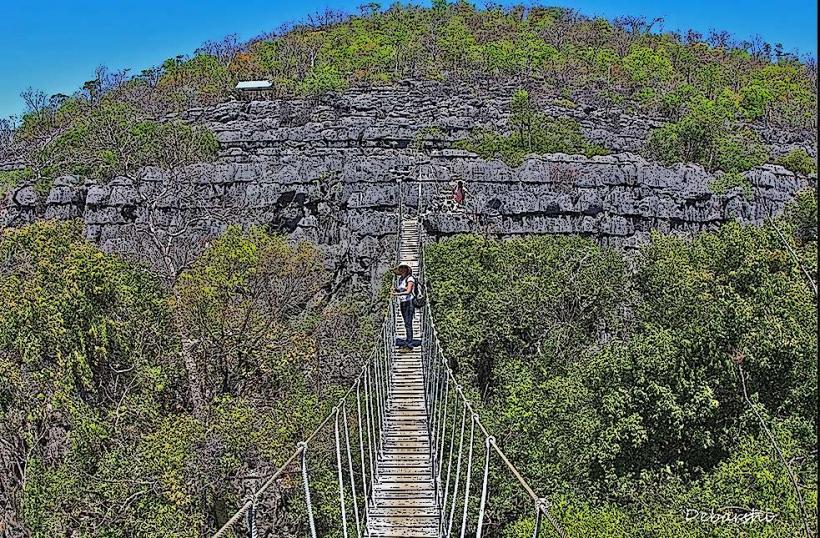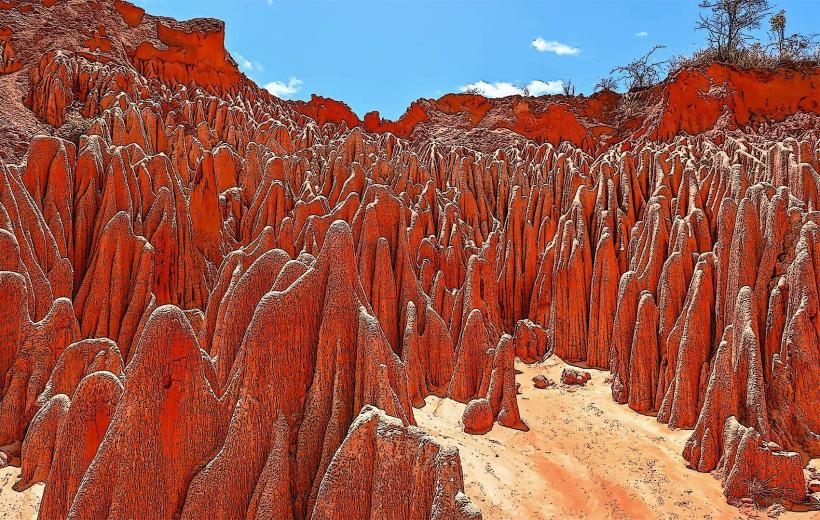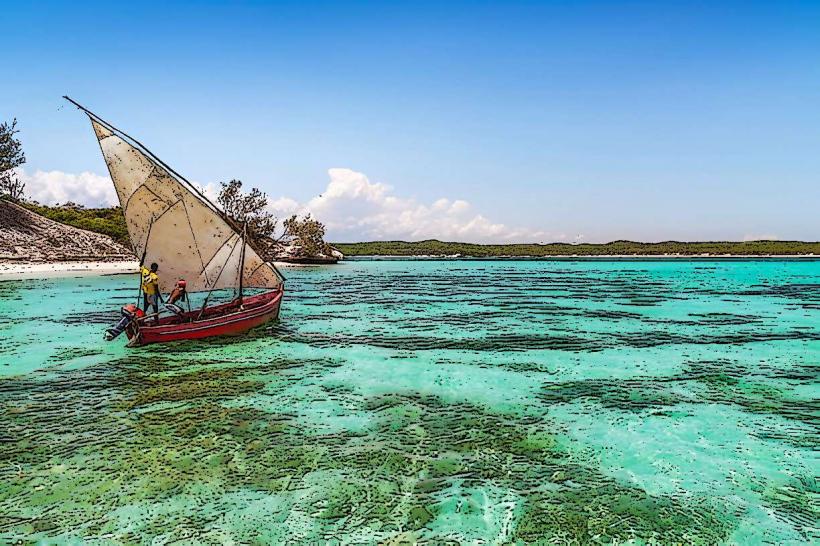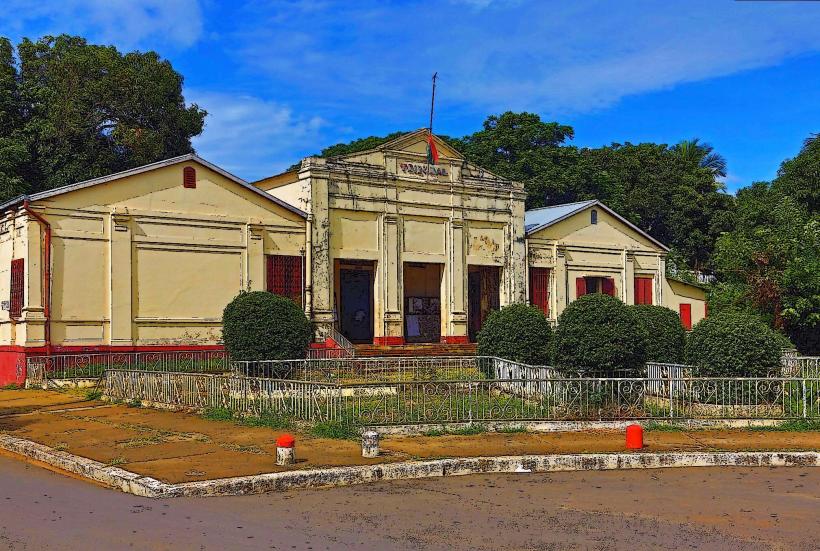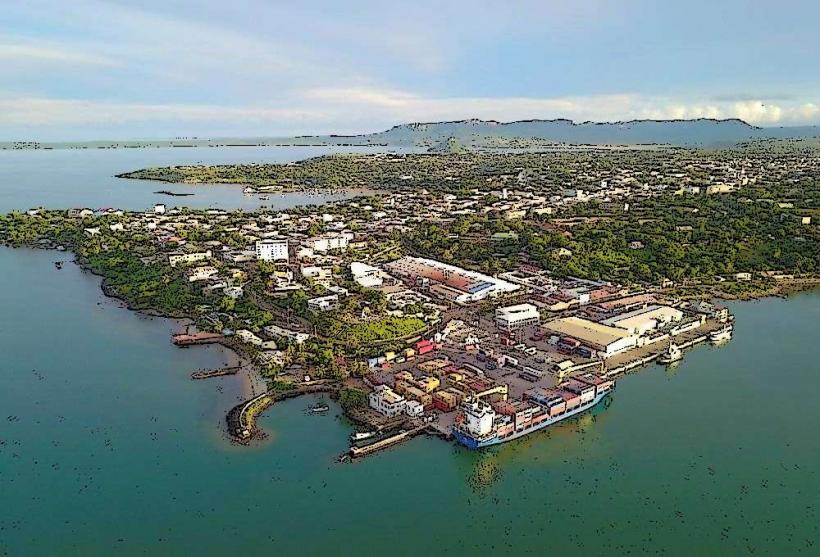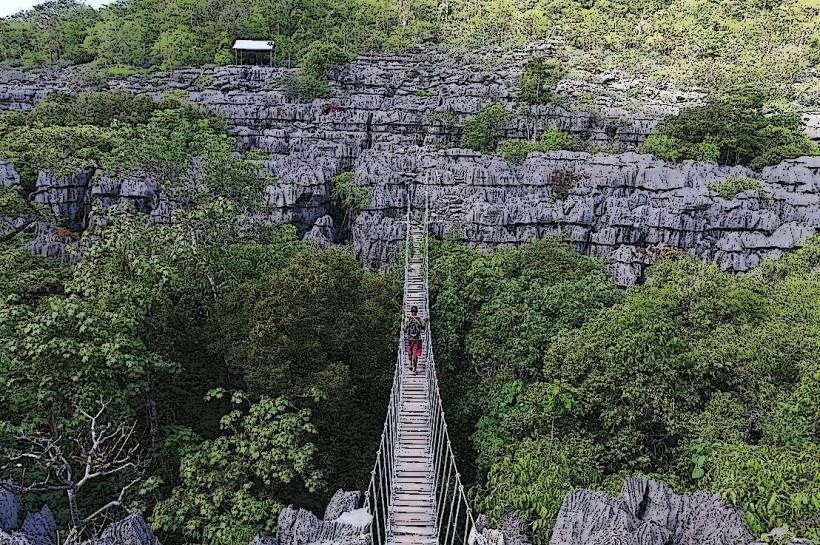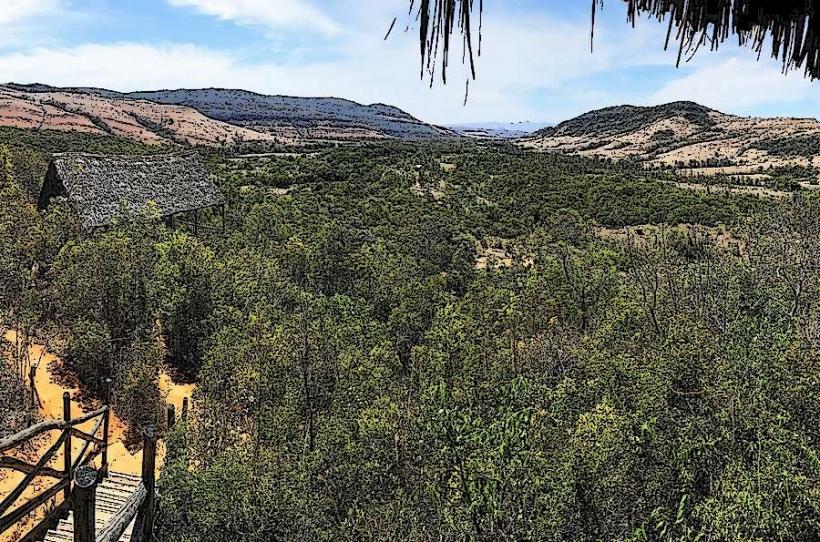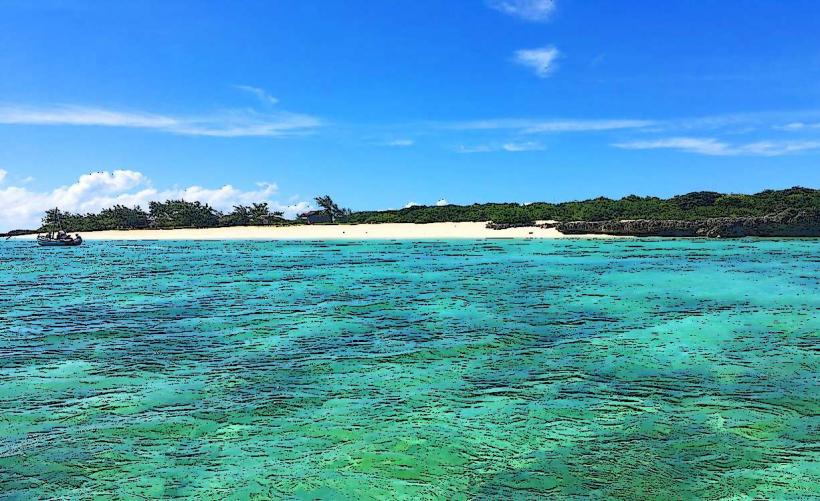Information
Landmark: Nosy HaraCity: Antsiranana
Country: Madagascar
Continent: Africa
Nosy Hara is a breathtaking archipelago located off the northern coast of Madagascar, near Antsiranana (Diego Suarez). Known for its stunning natural beauty, rich biodiversity, and unique geological formations, Nosy Hara is part of a marine national park and a haven for ecotourists, divers, and nature lovers.
1. General Information
- Location: Off the coast of Madagascar in the Diana Region, near the northern tip of the island.
- Designation: Part of the Nosy Hara Marine National Park, established in 2007.
- Area: The park covers 125,471 hectares, including marine and terrestrial ecosystems.
- Accessibility: Typically reached by boat from Antsiranana or nearby villages such as Ampasindava.
2. Unique Features
a. Tsingy Formations
- Nosy Hara is famed for its mini-tsingy, jagged limestone pinnacles similar to those found in Ankarana and Tsingy de Bemaraha.
- These unique formations dominate the islands, creating a dramatic landscape.
b. Pristine Beaches
- The archipelago boasts secluded, white sandy beaches with crystal-clear waters, ideal for relaxation and snorkeling.
c. Coral Reefs
- Surrounding the islands are vibrant coral reefs teeming with marine life, making it a paradise for snorkelers and divers.
d. Sacred Sites
- The islands hold cultural significance for local communities, with sacred areas and traditional legends tied to their history.
3. Biodiversity
Nosy Hara is a biodiversity hotspot, offering both marine and terrestrial ecosystems.
a. Marine Life
- Fish: The reefs host an array of colorful fish, including clownfish, parrotfish, and groupers.
- Coral Species: The reef systems are rich in hard and soft corals.
- Sea Turtles: Frequently spotted around the islands.
- Sharks: Species like reef sharks can be seen, contributing to the ecological balance.
b. Terrestrial Life
- Reptiles: The islands are home to the Brookesia micra, one of the world’s smallest chameleons.
- Birds: A variety of seabirds, including terns and tropicbirds, nest in the area.
- Flora: The vegetation includes drought-resistant plants adapted to the rocky terrain.
4. Activities
a. Diving and Snorkeling
- The coral reefs around Nosy Hara offer some of Madagascar’s best underwater experiences, with excellent visibility and diverse marine life.
b. Rock Climbing
- The tsingy formations on Nosy Hara provide opportunities for rock climbing, suitable for experienced climbers seeking a unique challenge.
c. Hiking
- Trails on the islands lead through mini-tsingy and offer panoramic views of the archipelago and surrounding waters.
d. Beachcombing and Relaxation
- Nosy Hara’s pristine beaches are ideal for unwinding and enjoying the natural beauty.
5. Accessibility
a. Getting There
- Boat Trips: Boats can be hired from Antsiranana or nearby coastal villages.
- Tour Operators: Many operators offer guided excursions to Nosy Hara, including diving or snorkeling packages.
b. Entry Requirements
- As part of a national park, visitors are required to pay an entry fee, which contributes to conservation efforts.
6. Best Time to Visit
- Dry Season (April to November): The best time for diving, snorkeling, and exploring the islands, with calm seas and clear skies.
- Rainy Season (December to March): Access may be limited due to rough seas, but the islands remain lush and vibrant.
7. Conservation Efforts
- Nosy Hara Marine National Park was established to protect its fragile ecosystems, including its coral reefs and endemic species.
- Conservation challenges include illegal fishing, climate change, and tourism impacts, but initiatives focus on sustainable management and local community involvement.
8. Nearby Attractions
- Diego Suarez (Antsiranana): Explore the vibrant city and its colonial history.
- Emerald Sea (Mer d’Émeraude): A stunning turquoise lagoon, perfect for water sports and relaxation.
- Montagne d’Ambre National Park: A nearby rainforest park with waterfalls and diverse wildlife.
- Ankarana Special Reserve: Known for its tsingy formations and caves.
9. Practical Tips
- What to Bring:
- Snorkeling or diving gear (if not provided by a tour operator).
- Comfortable walking shoes for exploring tsingy.
- Sunscreen, hats, and plenty of water.
- Respect Local Customs: Some areas may be sacred; always follow the guide’s instructions.
10. Highlights of Nosy Hara
- Stunning combination of marine and terrestrial ecosystems.
- Unique mini-tsingy formations that offer exciting exploration opportunities.
- Pristine coral reefs and beaches for unparalleled snorkeling and relaxation.
- Rare and endemic species like the Brookesia micra, the tiny chameleon.
Conclusion
Nosy Hara is a paradise for those seeking adventure, tranquility, and a close connection with Madagascar’s natural beauty. Whether you’re diving in its vibrant reefs, hiking through its limestone formations, or relaxing on its secluded beaches, Nosy Hara offers a unique and unforgettable experience.

